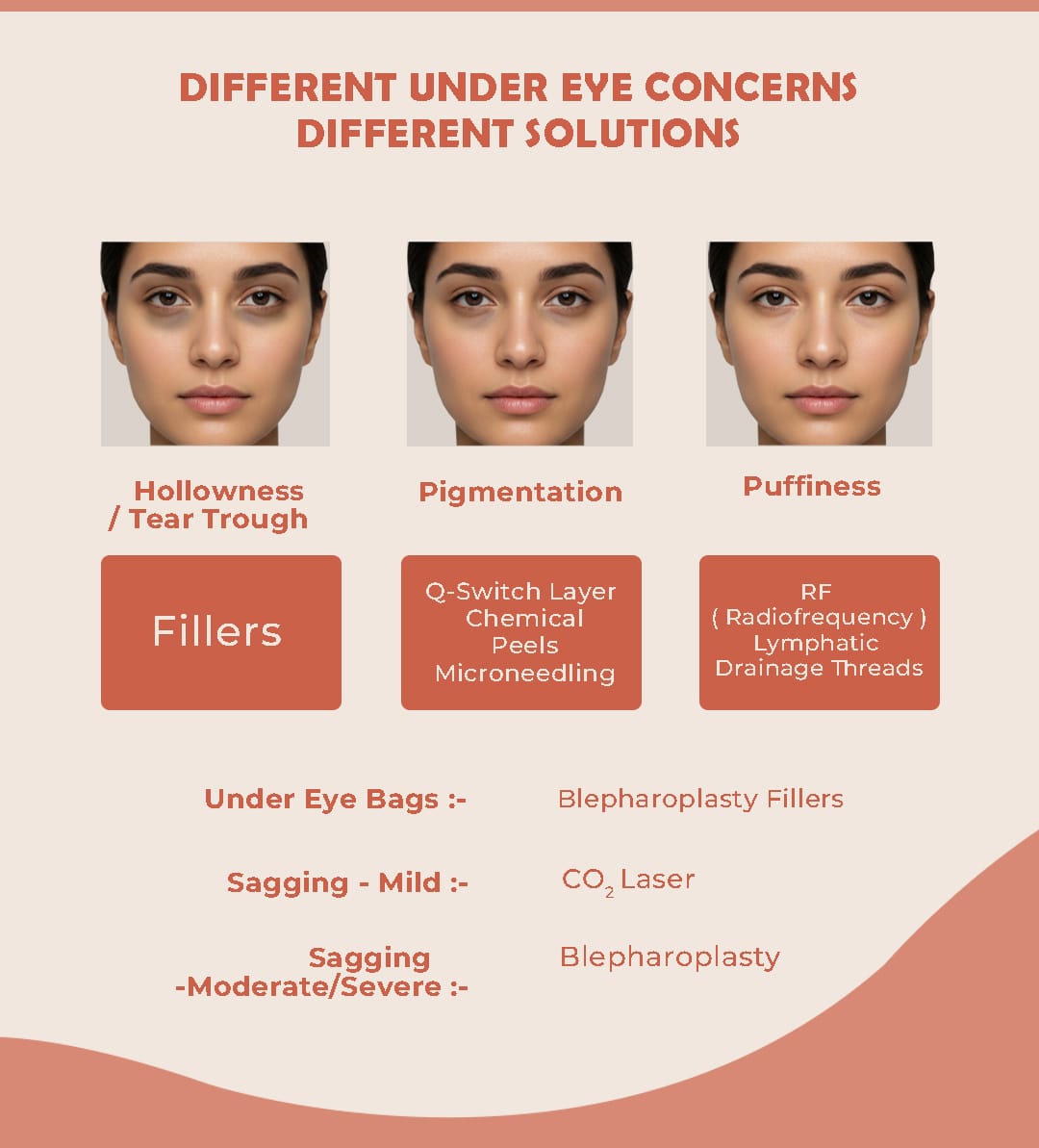

Under Eye Dark Circles (UEDC) refer to the appearance of darkness or shadows beneath the eyes. This may be due to skin discoloration (pigmentation), changes in your facial structure (hollowness, volume loss), blood vessels (visible veins, blood pooling), or shadows created by puffy eyelids or loose skin or fat that cause eye bagsCommon Causes of Dark CirclesHere are some main causes for dark circles, these are most often seen in combination:
You may be a good candidate for treatment if:

Types
Depending on the underlying cause(s), the treatment options may include:
Topical Agents – creams with hydroquinone, vitamin C, kojic acid, azelaic acid, antioxidants, and skin brighteners to reduce pigmentation.
Chemical Peels – lighten hyperpigmentation and renew the skin surface.
Laser and Light-based Therapies – reduce pigmentation, treat vascular dark circles, tighten skin, resurface skin texture, and diminish visible veins.
Dermal Fillers (Hyaluronic Acid) – restore lost volume in the tear trough, smooth transitions, and reduce shadows caused by hollowness or can be used to camouflage eye bags.
Autologous Fat Grafting (Fat Transfer) – replaces volume more permanently in cases of deeper hollowness.
Platelet-Rich Plasma (PRP) – improves skin texture, stimulates collagen, and helps with pigmentation and under-eye laxity.
Polynucleotide / Exosomes – strengthen thin under-eye skin, improve elasticity, and encourage regeneration. Better when combined with PRP
Surgery (Blepharoplasty or Fat Pad Removal/Transposition) – corrects significant fat prolapse, puffiness, or skin laxity reduces eye bags
Lifestyle, Home & Preventive Measures – adequate sleep, hydration, sun protection, treating allergies, avoiding rubbing the eyes, and cold compresses to reduce puffiness.